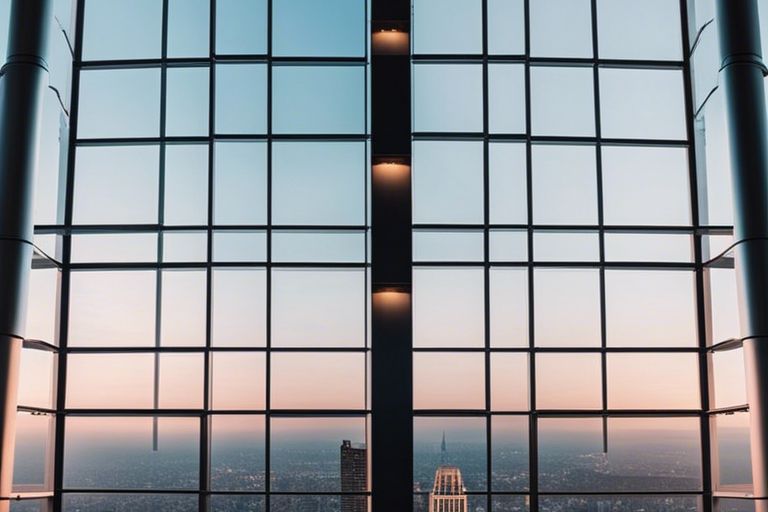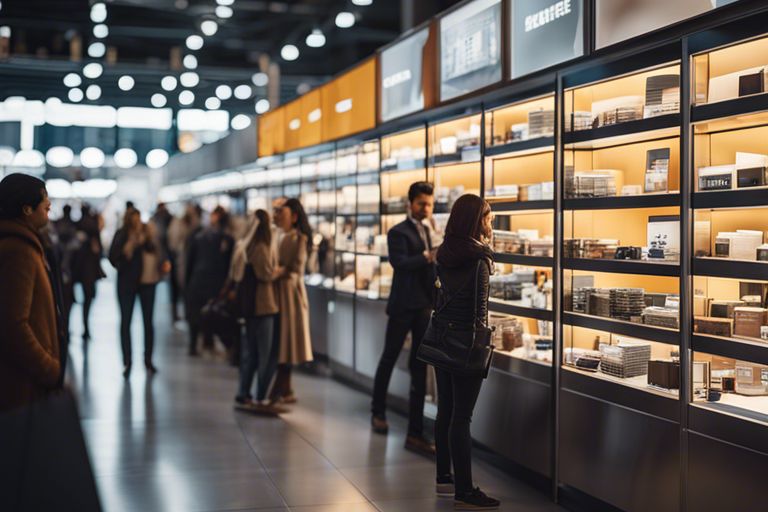When it comes to modern architectural design, curtain wall glazing plays a crucial role in achieving both aesthetic appeal and functional efficiency. This innovative technique involves the use of glass panels to create an external envelope for buildings. Not only does it enhance the visual appeal of a structure by allowing natural light to flow in, but it also significantly improves energy efficiency and thermal performance. However, it is important to understand the importance of proper installation and maintenance to ensure the durability and safety of curtain wall glazing systems. In this blog post, we will probe into the benefits, challenges, and considerations associated with curtain wall glazing, shedding light on its significant role in modern architecture.
Key Takeaways:
- Enhances building aesthetics: Curtain wall glazing provides a modern and sleek appearance to buildings, enhancing their overall aesthetics.
- Allows natural light to penetrate: The use of curtain wall glazing allows natural light to enter the building, reducing the need for artificial lighting and creating a more comfortable interior environment.
- Improves energy efficiency: Properly designed curtain wall glazing can help in reducing heating and cooling costs by providing thermal insulation, thus improving the energy efficiency of the building.
The Evolution of Curtain Wall Glazing
Historical Development
Curtain wall glazing has a rich history dating back to the early 19th century when it was first introduced in industrial buildings. The concept of using glass as a building material to enclose structures while allowing natural light to filter through revolutionised architectural design. Over the years, the development of curtain wall glazing has evolved from simple single-pane designs to more complex and energy-efficient systems.
By the mid-20th century, curtain wall glazing had become synonymous with modern skyscraper architecture, enabling architects to create sleek, light-filled facades that reflected the aspirations of the time. This period saw a shift towards using aluminium frames that provided greater structural support and design flexibility for large-scale projects.
Technological Advancements and Material Innovations
Technological advancements and material innovations have played a pivotal role in shaping the evolution of curtain wall glazing. The introduction of double-glazed units helped improve thermal performance and energy efficiency, leading to a reduction in heating and cooling costs for buildings. The use of low-emissivity coatings further enhanced the insulating properties of curtain wall systems, making them more sustainable and environmentally friendly.
Modern curtain wall systems now incorporate advanced technologies such as photovoltaic glass that can generate electricity from sunlight, contributing to the overall energy efficiency of a building. The development of lightweight and high-strength materials like carbon fibre has also allowed for innovative designs that push the boundaries of what is possible in architectural glazing.
 <
<
Aesthetics of Curtain Wall Glazing
Architectural Expression and Building Identity
Curtain wall glazing plays a significant role in defining the architectural expression and building identity of a structure. The use of glass, metal, and sometimes stone or ceramic panels in curtain walls allows for versatile design possibilities that can create a striking visual impact. The sleek and modern appearance of curtain wall glazing often conveys a sense of sophistication and contemporary style, making it a popular choice for many modern buildings.
The transparency of glass in curtain wall systems can also reflect the surrounding environment and capture natural light, creating a dynamic and ever-changing facade. This interaction with light and reflection can give a building a unique character, making it stand out in its urban or natural setting. The design choices in curtain wall glazing can emphasise certain architectural features or create a harmonious blend with the surroundings, enhancing the overall aesthetic appeal of the structure.
Light Management and Visual Appeal
Curtain wall glazing not only contributes to the aesthetics of a building but also plays a crucial role in light management and enhancing the visual appeal of the structure. The strategic placement of opaque spandrel panels and transparent vision glass in curtain wall systems allows architects to control the amount of natural light entering the building, creating a comfortable and well-lit interior space that promotes productivity and well-being among occupants.
Furthermore, the use of low-emissivity coatings and advanced glazing technologies in curtain wall systems can help improve energy efficiency by reducing heat gain or loss, ultimately lowering the building’s carbon footprint. This balance between aesthetic appeal and functional performance makes curtain wall glazing a valuable element in contemporary architecture, addressing both the visual and practical aspects of building design.
Functional Aspects of Curtain Wall Glazing
Energy Efficiency and Thermal Performance
Curtain wall glazing plays a crucial role in enhancing the energy efficiency and thermal performance of a building. By incorporating high-quality double or triple glazing units, curtain walls can significantly reduce heat loss and solar heat gain, thus lowering the building’s overall energy consumption.
The use of advanced coatings, such as low-emissivity coatings, can further enhance the insulating properties of curtain wall glazing, helping to maintain a comfortable indoor environment while reducing the reliance on heating and cooling systems.
Structural Considerations and Safety Features
When it comes to structural considerations, curtain wall glazing must be able to withstand various loads, including wind, seismic forces, and its self-weight. Structural engineers carefully design curtain wall systems to ensure their structural integrity under different conditions, providing a safe and secure enclosure for the building.
In terms of safety features, curtain wall glazing can incorporate impact-resistant glass and proper anchoring systems to enhance the building’s resilience against extreme weather conditions and potential impacts. These features are crucial for ensuring the safety of the building occupants and maintaining the overall structural stability.
Furthermore, regular inspections and maintenance of curtain wall systems are essential to ensure their continued performance and safety over time. Structural considerations and safety features go hand in hand to create a functional and reliable curtain wall glazing system for modern buildings.

Design and Installation Considerations
Customization and Design Flexibility
One of the key advantages of curtain wall glazing is the customization and design flexibility it offers to architects and designers. With curtain wall systems, it is possible to create unique and visually stunning facades that can enhance the aesthetic appeal of a building. The ability to choose from a wide range of glass types, colours, and finishes allows for creative freedom in designing modern and innovative architectural features.
In addition to aesthetics, curtain wall glazing also provides functional flexibility by allowing for the integration of various elements such as sun shading devices, ventilators, and insulated panels. This versatility enables designers to meet specific performance requirements while maintaining a cohesive design language throughout the building’s facade.
Challenges and Best Practices in Installation
Despite its numerous benefits, the installation of curtain wall glazing can present challenges that require careful consideration. Ensuring proper alignment and sealing of the glass panels is crucial to prevent water infiltration and air leakage, which can lead to structural issues and decreased energy efficiency. Best practices involve using experienced professionals and following industry standards to guarantee a successful and durable installation.
Moreover, the size and weight of glass panels used in curtain wall systems can pose logistical challenges during installation. Specialised equipment and rigorous safety measures are essential to handle and install large glass units at height. Adhering to health and safety regulations is paramount to protect workers and ensure a smooth installation process.
It is crucial to engage with expert contractors who have the necessary skills and experience to overcome installation challenges effectively. By following best practices and prioritising safety, the successful installation of curtain wall glazing can enhance the overall appearance and performance of a building.

The Aesthetic and Functional Purpose of Curtain Wall Glazing
Curtain wall glazing serves a dual purpose in modern architectural design. It not only enhances the aesthetic appeal of a building by creating a sleek and contemporary look but also functions as a crucial element in the building’s energy efficiency and environmental performance. By allowing natural light to enter the building and providing thermal insulation, curtain wall glazing plays a significant role in reducing the reliance on artificial lighting and heating systems, thus contributing to sustainable design practices. Its versatility in design, material options, and performance characteristics make curtain wall glazing a popular choice for architects aiming to achieve both visual impact and functional efficiency in their projects.
FAQ
Q: What is the aesthetic purpose of curtain wall glazing?
A: The aesthetic purpose of curtain wall glazing is to enhance the overall appearance of a building by creating a sleek, modern, and seamless facade. It allows for maximum natural light penetration, creating a bright and airy interior space while providing a visually appealing exterior look.
Q: What is the functional purpose of curtain wall glazing?
A: The functional purpose of curtain wall glazing is to provide weatherproofing, thermal insulation, and sound insulation to a building. It acts as a protective barrier against external elements such as rain, wind, and pollution, while also improving energy efficiency by reducing heat loss and minimising noise transmission.
Q: What are the key benefits of using curtain wall glazing in architectural design?
A: The key benefits of using curtain wall glazing in architectural design include increased natural light penetration, improved energy efficiency, enhanced thermal comfort, reduced maintenance costs, design flexibility, and the ability to create unique and striking building facades. It also allows for the integration of sustainable technologies such as photovoltaic panels and solar shading devices.






